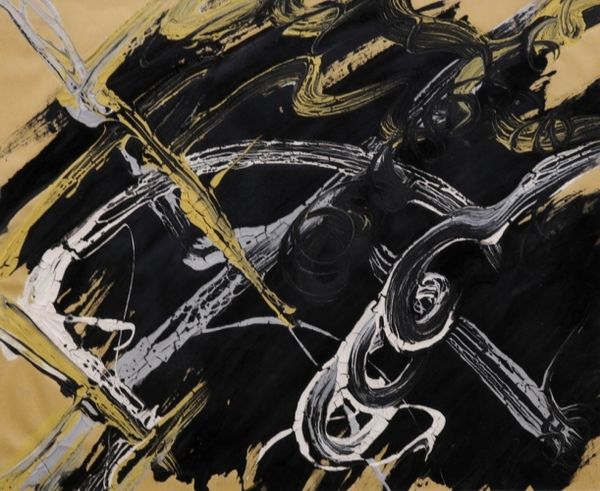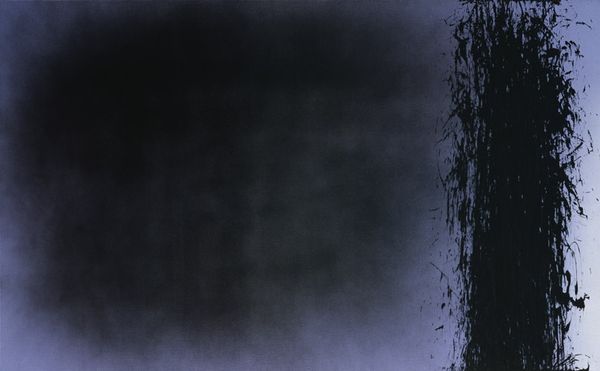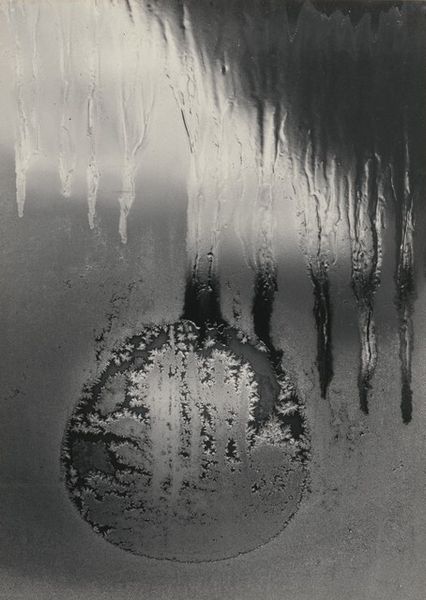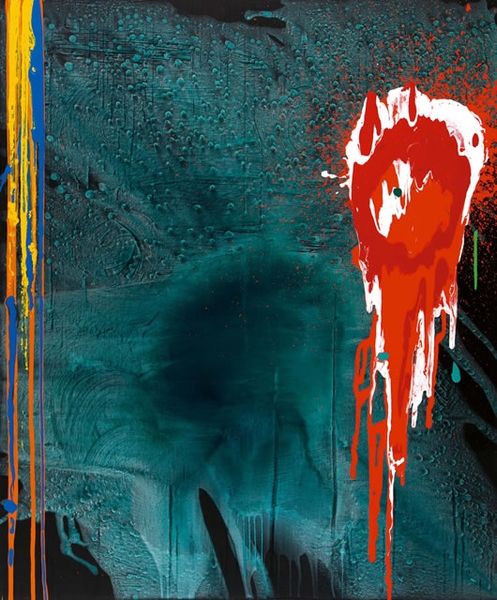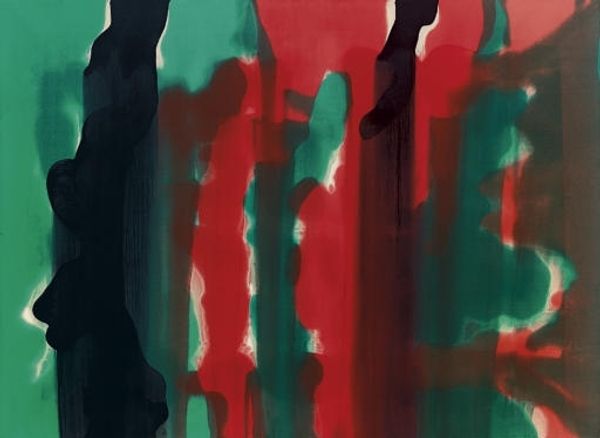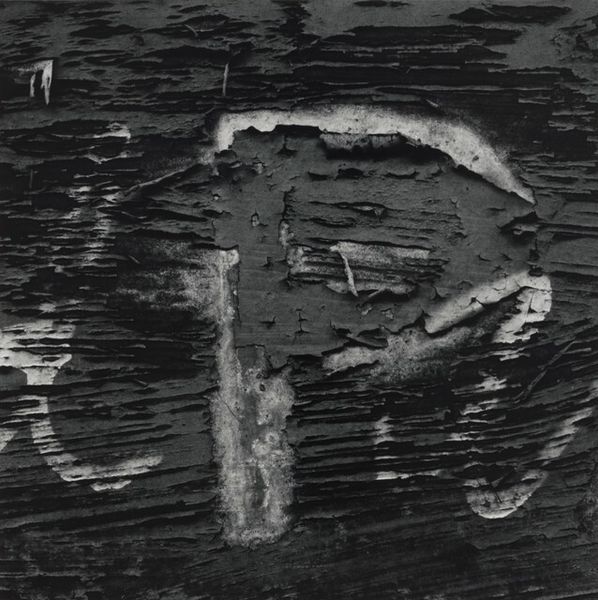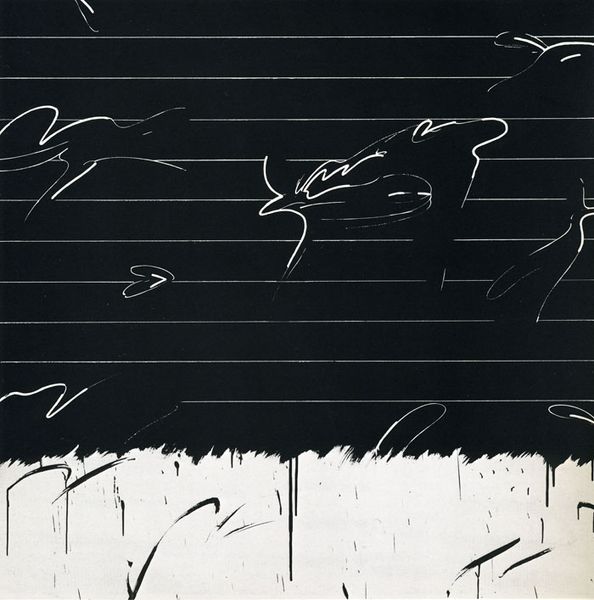
oil-paint
#
abstract-expressionism
#
abstract expressionism
#
acrylic
#
oil-paint
#
neo expressionist
#
underpainting
#
paint stroke
#
abstraction
#
monochrome
Dimensions: 58 x 73 cm
Copyright: Robert Motherwell,Fair Use
Curator: Robert Motherwell created "The Figure 4 on an Elegy" in 1960. It’s rendered with oil paint. I'm struck immediately by its scale, especially how the monumentality clashes with the vulnerability implied by the title. Editor: Yes, it certainly emanates a sense of restrained drama through that interplay of massive forms and raw paint strokes against a creamy underpainting. It's quite dynamic. What is the symbolic resonance for you? Curator: Well, Motherwell's use of abstract forms, specifically in the "Elegies to the Spanish Republic" series, frequently conveys themes of loss and lament. Black is obviously tied to mourning across many cultures, the weighty darkness speaks volumes here. But there’s that splash of red, shaped somewhat like a '4'...suggesting defiance. Perhaps even memory, burning bright against oblivion. Editor: And the composition itself directs our reading. The layering creates a tangible sense of depth, pulling the eye into and across the pictorial plane. The limited color palette and aggressive brushwork lend themselves to an interesting tension. Curator: Absolutely, that tension becomes symbolic in itself. It isn't just the colours at play. Consider how Motherwell presents that crimson number: imperfect, almost dissolving into the somber background. Editor: Right. It disrupts the starkness, offering a counterpoint. It's through those careful applications, like the contrast between the textures of the golden ground and heavy black mass, where he makes his statement, irrespective of direct representation. It is an image potent with implied meaning. Curator: It seems that "The Figure 4 on an Elegy," more than being just a historical note, offers a broader meditation on memory and emotion itself. Editor: Indeed. Motherwell invites us to witness not just history but the persistence of memory.
Comments
No comments
Be the first to comment and join the conversation on the ultimate creative platform.




